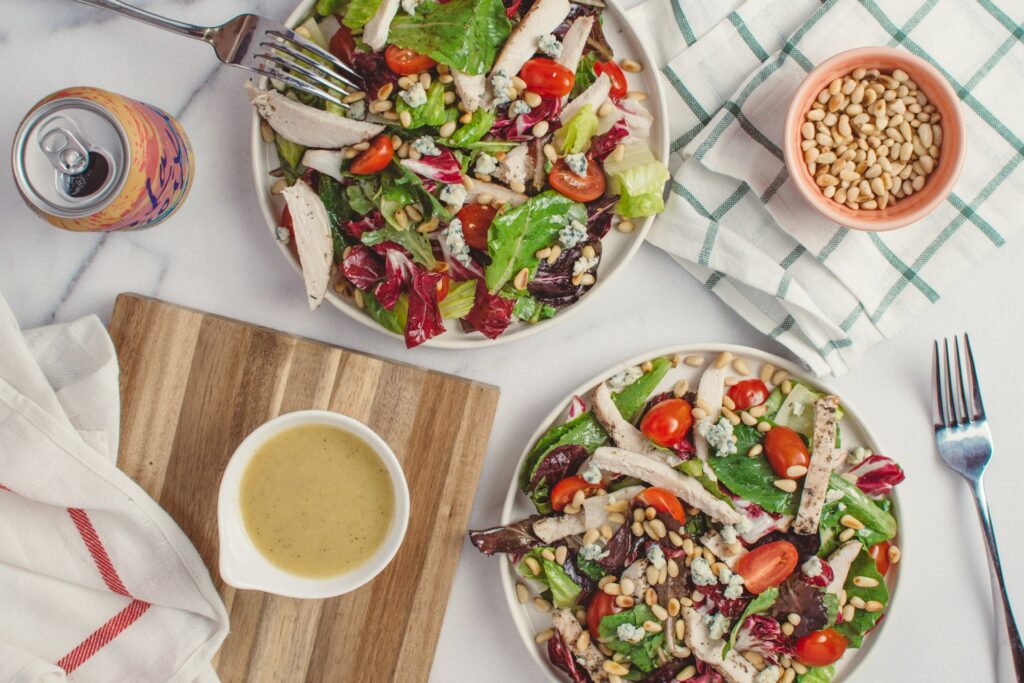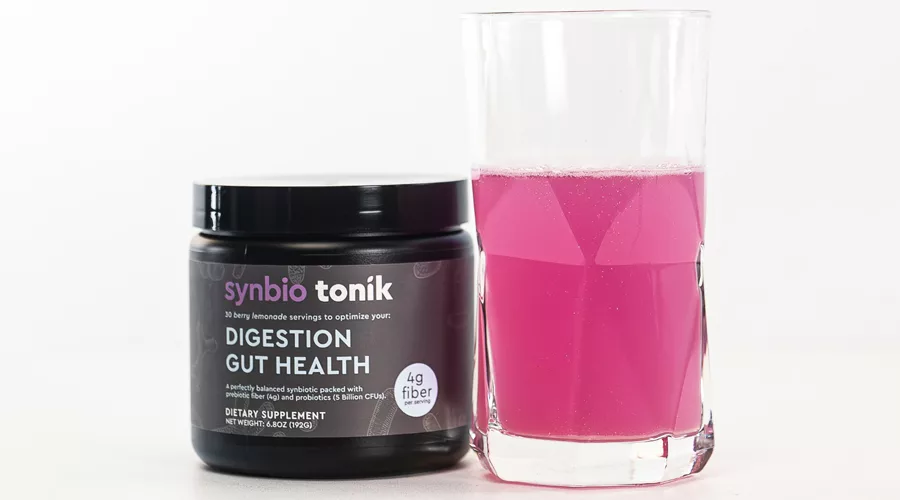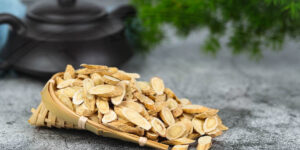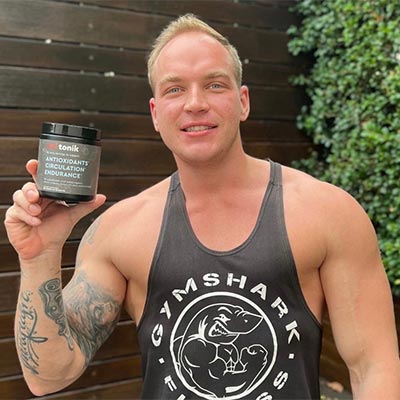
How To Increase Your Fiber Intake And Improve Your Gut Health
At the core of nurturing a healthy gut lies fiber – nature’s “broomstick” for sweeping away toxins and promoting a thriving microbial community. Fiber plays a crucial role in maintaining digestive health, regulating blood sugar levels, and even promoting weight loss.
Unfortunately, in today’s world fast food and processed snacks are extremely popular. More often than not, convenience trumps nutritional value when people choose what they eat. That’s why getting enough fiber can be a challenge.
To create this expert roundup I hired Minuca Elena to reach 80 health specialists and ask them the following question:
What are the best ways to increase your fiber intake and improve gut health?
From registered dietitians to doctors and nutritionists, each expert brings a unique perspective to the table, offering practical tips and evidence-based insights that anyone can incorporate into their daily routine. Keep reading to see what they have to say.
Jenna Volpe

Fiber is naturally occurring in fresh fruits, veggies, and whole grains. Adding more of these into meals is an easy way to increase your fiber intake. There are infinite ways to do this.
A few simple strategies include switching from white rice to brown rice or wild rice, adding a side of fresh cucumbers or salad to have alongside a sandwich, or snacking on an apple and peanut butter instead of potato chips.
There are also certain fiber-rich functional foods that I often recommend in my private practice.
Examples of high-fiber functional foods include ground flax seeds, chia seeds, and psyllium husks. These provide a significant amount of fiber in relatively small quantities, so they can be easily added to oatmeal, overnight oats, soups, and smoothies.
It’s essential to increase your fiber intake gradually and to drink plenty of fluids to prevent adverse reactions such as gas and bloating that may happen when you increase your intake.
Stephanie Magill

You may be surprised at how easy it is to add more fiber to your diet. With a few adjustments to your daily routine, you’ll boost your fiber intake in no time.
It’s important to add fiber gradually to avoid digestive discomfort. Your gut needs time to adjust to increased fiber intake. And while you’re at it, as you increase fiber, drink plenty of water. Fiber absorbs water, so staying hydrated helps prevent constipation.
Some easy options are to swap lower fiber options for higher fiber alternatives, such as whole grain bread instead of white, brown rice over white rice, whole wheat pasta, or chickpea pasta instead of regular.
Add fiber to your meals in creative ways like adding a handful of nuts or seeds to a salad, making one meal a week a plant-based meal, adding fresh or dried fruit to your cereal or pancakes, crushing fiber cereal and use as a topping for casseroles or toppings for desserts.

Sarah Graca

You might have heard that increasing your fiber intake is a great way to improve your health. It’s true! Eating fiber-rich foods helps normalize bowel movement and maintain overall bowel health, lowers cholesterol, helps control blood sugar levels, improves weight, and even helps you live longer.
So, how can you get enough fiber to support your health and well-being? First, you have to adjust your mindset and expectations. Just like losing weight is a process, changing how you think about food also requires patience and dedication.
Once you decide to incorporate more healthy foods, including fiber-rich options, into your diet, you’ll start to see results–and feel better!
Now that you’re on a mission to eat better, make sure you’re shopping for the correct foods. Fruits and vegetables are great sources of fiber that you incorporate into your daily meals. An easy way to increase your fiber intake is to include one fruit or veggie in your breakfast, lunch, and dinner.
Chickpeas are another great source of fiber, so pairing veggies with hummus can provide additional fiber. Another easy suggestion? Use whole-grain and wheat flour, which have more fiber than white flour, while baking. You can also eat pasta and bread made with whole-grain and wheat flour instead of white flour.
While it’s important to eat healthy foods, we also advocate for cheat days so you can still enjoy the foods you love. After all, we’re human! The idea is to slowly incorporate more healthy foods into your diet over time, without depriving yourself, to maintain a sustainable diet and goal weight.
By changing your mindset and shopping for healthier, fiber-rich foods you can begin your journey to a healthier you.
Michelle Thielen

In my opinion, the best ways to increase your fiber intake and improve gut health are:
- Eat more plants
- Eat fiber-rich fruits
- Air-popped popcorn
There are many reasons to eat more vegetables. If you are seeking to increase your fiber intake as well as improve your gut health, you want to eat more plants. Particularly, non-starchy vegetables. These are low in calories and high in nutrients, including fiber. Vegetables are also linked to combating chronic disease and illness, including the most common causes of death with cancer and cardiovascular disease.
Consuming any fruit will improve your gut health and increase fiber, however, there are fruits that contain more fiber than others such as pears, apples, and berries. Eating them with a fat such as cheese can also improve your gut health.
If you like popcorn, this might be the best way to improve your fiber intake. The US Department of Agriculture says that air-popped popcorn, which is a whole grain, delivers 4 grams of fiber per ounce (28 grams), which is 3 cups of popped popcorn.
It is always best to get your fiber from real food (whole grains, fruit, vegetables, etc.), however, if you are not being intentional about your fiber intake and gut health, be sure you take a fiber supplement.
Martha McDuff Kester

Here are a few strategies I share with my clients that you can use to increase your fiber intake and thus improving gut health.
1. First, it is best to slowly add fiber into the diet so I always encourage my clients/patients to start with breakfast. You can add nuts and berries to oatmeal or even two tablespoons of nut butter to oatmeal. I love power bowls for breakfast. You place in a bowl two fried eggs, avocado, kale, black beans, and sweet potatoes for a fiber pact breakfast.
2. Make swaps. Check out what you are currently eating and see what substitutions you can make to get more fiber in. Switch out white rice for brown rice and white bread for whole grain bread etc
3. Snack on fiber like apples and add peanut butter to the apple or hummus and celery or carrots.
4. Add chia seeds to your diet.
5. For dinner, make one night a vegetarian night and include beans.
Elizabeth Arensberg

The goal is to have a gut that is thriving in healthy gut bacteria. To grow and maintain these microorganisms (healthy gut bacteria) you have to nourish them. The best way to nourish and feed it is through fiber. I encourage my clients to get 30-40 grams of fiber in a day.
Fiber is found in vegetables, fruits, beans, legumes, whole grains, oats, nuts, and seeds. There are three different strategies I recommend to boost fiber intake.
The first strategy is to use the balanced plate method at lunch and dinner. I love to use the plant, protein, carb, and healthy fat rule. You should aim to fill half of the plate with non-starchy vegetables (ex. Dark leafy greens, broccoli, cauliflower, Brussels sprouts, carrots). Then fill the remaining ¼ with starchy carbs (whole grains, beans, legumes, rice, potatoes, corn, peas) and ¼ with protein. By hitting over 75% of the plate with vegetables and starchy carbs you will hit close to 10 grams of fiber.
The second strategy is to implement smart fiber-rich snacking. When having a snack ensure you incorporate 1-2 higher fiber options. Fiber-rich snacks include nuts, seeds, blueberries, raspberries, pears, kiwis, figs, prunes, and dates. By eating 1 medium pair with 1 ounce of pumpkin seeds you will consume at least 11 grams of fiber.
The third strategy is to eat high-fiber food at breakfast. The best hack is to use whole grain toast, fruit, and avocados to reach 15+ grams to start your day.
With these three strategies, you will be well on your way to hitting 30-40 grams of fiber daily to better nourish your gut health.
Katherine Maslen

Two very important things matter when it comes to gut health and fibre intake.
Make your diet at least 50% whole plant foods. Eating a wide variety of nuts, seeds, fruits, vegetables, and gluten-free whole grains is the best way to enhance your gut health all around.
Some of the highest fibre foods are apples, pears, kiwifruit (with the skin on especially), parsnips, sweet potato, okra, dates, figs, and avocados. Legumes, flaxseeds, chia seeds, brown rice, and oats are great fibre sources also.
You want to eat a combination of soluble and insoluble fibre is necessary for gut health and to support the microbiome. Eating a wide variety of plant foods ensures you are getting both.
Don’t peel your fruit and vegetables unless absolutely necessary. 80% of the fibre is in the skin of a potato for example. There is no need to peel carrots, sweet potatoes, apples, or even kiwifruit! The skin of a kiwi fruit is amazing for your gut health, simply cut off the ends, wet it under a tap, and eat it like an apple. Pumpkin and sweet potato skin can be roasted.
Fibre is important for gut health for several reasons. First, it provides fuel for the microbiome, the 2-3kg of bacteria and yeasts you have living inside of you. A healthy microbiome is one of the most important factors in preventing chronic disease, and nearly every single chronic disease has links back to poor health of the microbiome.
Fibre also serves as a bulking agent – making bowel movements larger which pressed on the walls of the colon and actives the migrating motor complex – which moves your poo along the digestive tract. Fibre also has roles in metabolism and detoxification – helping to regulate blood sugar and binding to toxins and excess hormones to eliminate them from the body.
Alex Evink

Here are my top strategies which you can use to increase your fiber intake:
1. Incorporate chia seeds into smoothies, yogurt, overnight oats/oatmeal, puddings, or even just 8 ounces of water. Chia seeds contain a whopping 10 grams of fiber in a two-tablespoon serving! These tiny but mighty seeds are a quick and convenient way to increase your fiber intake.
2. Look for high-fiber breakfast cereals. For example, Cascadian Farm Organic Hearty Morning Cereal contains 10 grams of fiber per serving!
3. Consume a variety of fruits and vegetables, and be aware of the ones that are highest in fiber. One avocado contains 10 grams of fiber! Incorporate into meals AND snacks as well to easily increase your fiber intake.
4. Add beans and legumes to breakfast to increase both the protein and fiber content. Make a Mexican-inspired breakfast bowl with eggs, beans, shredded cheese, and avocado slices.
5. Compare food labels of different grain products. Bread, tortillas, pasta, rice… you might be surprised at the difference!
6. When a recipe calls for rice, try quinoa or barley instead – which is much higher in fiber.
Dr. Joan Salge Blake

Your gut loves fiber. Fruits, veggies, whole grains, beans, lentils, and chickpeas are all fabulous sources of fiber.
A diet adequate in fiber can help you better manage your blood glucose levels and body weight, potentially lower your blood cholesterol levels, and aid in relieving constipation. Most Americans are falling short of the amount recommended daily.
Here are some tips to add more fiber to your diet:
1. Beans are chock-full of fiber. A mere ½ cup of cooked kidney beans will provide 8 grams of fiber. Beans also contain some viscous soluble fibers This type of fiber can also aid in relieving constipation, as their water-attracting capability allows the stool to increase in bulk and form a gel-like soft texture, which makes it easier to pass. Beans are also a good source of protein so you get “two for the price of one” when you add them to your diet.
2. Oatmeal is also a great source of viscous soluble fiber so can also aid in constipation as mentioned above. A cup of cooked oatmeal will provide 4 grams of fiber. Either cook or as overnight oats, it’s a high-fiber way to start your day. Breakfast cereals that contain oats such as Cheerios are also an easy way to start your day with soluble fiber.
3. Raisin bran cereal will provide 5 grams of fiber in a ¾ cup serving. Add a serving to your afternoon yogurt for a high-fiber snack.

Blair Persyn

Including a wide variety of plant-based foods like fruits, vegetables, legumes, whole grains, nuts, and seeds can help increase your fiber intake. Fiber is essential for feeding our gut bacteria and is fermented to produce short-chain fatty acids, which have many health benefits including immune support.
While research on the gut microbiome is ongoing, The American Gut Study found that consuming at least 30 different types of plant foods each week helps increase the diversity of our gut microbiome.
We can add more plant-based foods and fiber into our diets by adding veggies to sandwiches and pizzas, eating soups or salads with meals, choosing more whole grains instead of refined grains, and snacking fruits, veggies, and nuts between meals.
Joanna Chodorowska

You should increase whole grains and bulking fiber like oat bran and flax seeds which help to make stools more formed. But if you are not drinking enough water, then you will experience constipation.
To loosen stools, I suggest adding more vegetable and fruit fibers. The ones I recommend most are kiwi fruit, warm applesauce, cooked cabbage, and cooked vegetables including broccoli, artichokes, and cooked root vegetables: beets, carrots, potatoes, sweet potatoes, and rutabaga to name a few.
Apples, pears, berries, apricots, and plums/ prunes are also great fruits to add for more fiber. Cooked beans are also another great source of fiber.
The key is to add a balance of both soluble and insoluble fibers that come from different sources of foods. By having a mix of grains fibers, fruit fiber, and vegetable fibers in most meals, you will be feeding more of the microbiome organisms as well.
If you are limited to a handful of either, then you are only feeding the same ones, and this imbalance or dysbiosis can be what is contributing to GI distress. So it is about finding the right balance of these fibers and not focusing on just one type or one food group for fiber.
I also suggest adding a small amount to start – for some items(bulking fibers), it may be a teaspoon to start and work up to 1 tablespoon; while for others it is half a cup (fruits and vegetables) and work up to eating 4-6 servings (1/2 cup each) per day.
If you increase too quickly, then you may find you get GI distress which will eventually go away, but to prevent that, start slowly and add small amounts every day until you reach a level where your stools are formed, and going to the bathroom is not a huge effort.
Erika Barrera

Strategies that people can use to increase their fiber intake include:
1. Eating more fruits and vegetables! General guidelines recommend 2-3 cups of vegetables and 1.5-2 cups of fruits per day. If you’re not near this recommendation, begin by adding ½ cup to your daily intake each week. This gradual increase of fiber will allow your gut to adapt which will help prevent unpleasing symptoms of gas and bloating.
2. Switch to whole grain or whole wheat products. Whole grains contain high amounts of fiber along with other important nutrients such as B vitamins, iron, and antioxidants! Some whole-grain food examples include oats, barley, brown rice, whole-grain bread, whole-wheat tortillas, and whole-wheat pasta. The fibers present in these whole grains help with bowel motility to prevent both constipation and diarrhea which leads to a healthier gut.
3. Eat more plant-based proteins such as tofu, tempeh, beans, lentils, nuts, and seeds. Unlike animal protein, plant-based proteins are rich in fiber and antioxidants, are easier to digest, and are prebiotics for gut bacteria. If you do not already eat a plant-forward diet, begin by incorporating one plant-based meal per week.
4. Incorporate Omega-3 fatty acids into your diet either by eating fish 2x per week or taking a supplement. New studies are showing Omega-3 fatty acids to be beneficial not only to our cardiovascular and brain health but also to our gut by increasing the variety of good bacteria.
Kristen Alvis

Increasing your fiber intake is an excellent way to support gut health and overall digestive wellness. Fiber acts as a prebiotic, feeding the good bacteria in our gut. Additionally, it aids in regulating blood sugar, lowering cholesterol, and reducing the risk of cancer. Here are some practical strategies to help boost fiber intake:
Diversify your plant-based foods by incorporating a variety of fruits, vegetables, whole grains, legumes, nuts, and seeds into your diet. Aim for a colorful plate to ensure you are getting a wide range of nutrients and fiber types.
Prioritize whole foods by opting for whole, unprocessed foods whenever possible. These foods are rich in fiber and other essential nutrients, Promoting optimal gut health and digestion. When checking if packaged food is a good source of fiber, look for foods with at least three grams of Fiber per serving on the nutrition label.
Gradually increase your fiber intake by making gradual changes to your diet to Allow your body time to adjust to higher fiber intake. Sudden increases can Lead to bloating or discomfort, so take it slow and steady.
Stay hydrated. Fiber absorbs water as it moves through the digestive Tract, so staying hydrated is essential for healthy digestion and preventing constipation.
Include prebiotic-rich foods. Prebiotics nourish good gut bacteria. Foods like garlic, onions, leeks, bananas, and asparagus promote a healthy gut microbiome.
Sara Kahn

When you increase your fiber intake, it’s important to add fiber to the diet gradually so you don’t experience an increase in gas and bloating.
I often recommend using protein smoothies as a delicious way to start the day and get a meaningful dose of fiber. Smoothies that include a source of protein, fiber, and healthy fats will help keep you full and focused for several hours.
A blended protein smoothie helps make food easier to digest and it allows you to gradually increase the amount of fiber.
My formula for gut-loving smoothies includes:
- 1/2 cup of low-sugar, high-fiber fruit such as strawberries, blueberries, blackberries, raspberries, and kiwi
- Two handfuls of leafy greens such as spinach, bok choy, or Swiss chard. These have a mild flavor so they don’t compete with the fruit flavors.
- One tablespoon of fat such as almond butter, peanut butter, or avocado
- Choose a source of protein that is 20 – 30 grams such as Greek yogurt or protein powder
- Use an unsweetened milk of choice such as almond, soy, coconut, or rice milk to blend to your desired consistency
- When you are ready to increase the fiber, add 1 teaspoon of flax seeds, chia seeds, or hemp seeds. Gradually increase to 2 tablespoons over the next few weeks as tolerated.
Dr. Kevin Huffman

I am both a bariatric physician and a licensed nutrition specialist who routinely treats patients for obesity – and fiber truly is king when it comes to gastrointestinal wellness.
Simply by eating more fruits and vegetables, more whole grains and legumes every day – or better yet, several times a day – you can significantly increase your fiber intake. It’s all about variety – the more, the better! And when reading food labels, opt for the highest-fiber version of the item when you can.
Choosing an assortment of these various items with each meal will increase variety and optimize digestive wellness – not to mention overall health – while also improving gut health because, as a rule, variety keeps the gut and you healthy. So remember variety, because when it comes to fiber, variety is king.
Starting the day with a high-fiber breakfast, like oatmeal or a chia smoothie, gets the ball rolling, which you can then follow with a few sips of water – drinking also helps the fiber go further wherever it is moving in your body.
Avoiding discomfort is another manifestation of giving your gut time to acclimate. If you are looking to increase fiber in your diet, look to do this gradually, sustaining any other exercise practices you might be doing; they are also good for digestive health.
Sheri Berger

Eating more plants is a surefire way to increase your fiber intake and improve gut health. Unlike foods that come from animals such as meat, fish, eggs, or dairy, plants such as fruits, vegetables, whole grains, beans, nuts, and seeds are sources of fiber.
Try strategies such as replacing chicken, fish, beef, or pork with lentils, black beans, garbanzo beans, pinto beans, or tofu at meals a few times per week. Try swapping ground meat for lentils in a pasta sauce or making a tofu scramble instead of an egg scramble for breakfast.
Beans, chia seeds, pears, apples, and Brussels sprouts are fantastic sources of soluble fiber. A 2021 study identified soluble fiber as one of the most important nutrients for a healthy gut microbiome since soluble fiber provides food (prebiotic) for good bacteria in the gut. For a fiber-packed breakfast rich in soluble fiber, try a bowl of oatmeal topped with diced apples or berries, chia seeds, and almond slices.
Only about 7% of Americans are meeting fiber recommendations according to the American Society of Nutrition and about 1 in every 10 adults is meeting recommended fruit and vegetable intake per the Dietary Guidelines for Americans. Taking steps such as making half our plate fruits and vegetables at meals can help us to reach those goals.
Jesse Feder

Some of the best ways to increase your fiber intake and improve gut health is by consuming more, whole grains, nuts, seeds, fruits, and vegetables.
Some of my favorite ways to do this are adding fruits to my yogurt, having celery/carrot sticks as a snack, replacing rice with quinoa, consuming whole grain cereals in the morning, and adding nuts/seeds to my salads, cereals, and yogurt.
I also enjoy having a fruit cup or a favorite fruit as a midday snack as well.
Paulina Lee

The goal is to get 25-35 grams of fiber every day because it can help with gut motility and feed a healthy gut microbiome for optimal gut health.
Focus on whole grains compared to refined grains. The fibrous parts of grains are removed when they are processed into refined grains, so whole grains contain more fiber. Whole grains include amaranth, quinoa, oatmeal, brown rice, millet, and so much more.
Enjoy nuts and seeds with your breakfast, as a snack, or topped on your salads. Not only do they have fiber, but they also contain protein and healthy fats.
Include more veggies on your plate. Filling up at least half your plate with non-starchy vegetables can help you increase your fiber intake. Focus on high-fiber vegetables, like avocados and broccoli.
Include beans or legumes in your diet. Although they may be starchy food, they contain great nutrients like high amounts of fiber, protein, vitamins, and minerals. Add them to toast, stews, and salads, or make them into soups and dips.
Leave the peel on your fruits and veggies. The skin on potatoes, cucumbers, and apples has extra fiber, so eating them can help increase your daily fiber intake.
Jabe Brown

While the benefits of increasing fiber intake for gut health are widely acknowledged, the typical advice of consuming more whole foods like oats, nuts, vegetables, and legumes is familiar to most. However, I’d like to share some fairly easy options that can be integrated into a diet quite easily.
1. Firstly, the easiest, cheapest, and most effective way to increase soluble fiber is through the use of Psyllium husk. Skip Metamucil, just go straight to the source. Starting with a dosage of 4-5 grams (approximately 2 tablespoons), accompanied by 2-3 glasses of water you’re already halfway there for your daily intake. This approach requires minimal changes to one’s diet, yet it yields considerable benefits for gut health.
2. Air-popped popcorn with a few coconut flakes. Not only does this serve as a delicious late-night snack but is also a great source of fiber. It’s a healthier alternative to many snack options, providing a great way to increase daily fiber intake without compromising on taste or the sweet tooth. You can even sprinkle a little bit of dark chocolate on top.
3. Wraps! But opt for low-carb tortillas, they tend to have around 8-10g of fiber per serving. If you add beans or avocado to it, you’re looking at 14-15g of fiber per wrap. Perfect, delicious, easy.
Also, some studies suggest that individuals with the lowest baseline fiber intake experienced the most significant improvements from upping fiber intake, highlighting the potential for dietary fiber to dramatically enhance gut microbiome function.
Adrienne Raimo

Focus on (slowly) increasing high-fiber foods. Many people aren’t getting the recommended amount of fiber, but trying to drastically increase fiber all at once can lead to uncomfortable symptoms such as gas and bloating. If you are going to incorporate more fiber into your diet, do it slowly over the course of a few weeks to allow your body to adjust.
Foods with fiber include fruits, vegetables, whole grains, legumes, nuts, and seeds; they help promote good gut health.
Choose whole grains (over processed grains). Examples include brown rice, quinoa, oats, whole wheat, barley, millet, and more. You’ll get fiber and extra nutrients.
Drink plenty of water. This is important – sometimes having more fiber and not enough water can create constipation. Staying hydrated helps fiber move through the digestive system more efficiently.
Limit processed foods. Processed foods are often low in fiber and may have higher added sugar content, which can negatively impact gut health. Aim to eat more whole, unprocessed foods most of the time.
Marissa Beck

The main way I help my clients increase their fiber intake is to pack their day with plants.
We need to aim for the Institute of Medicine (IOM) recommendation of 25-35g per day. My general rule of thumb for fiber is that meals and snacks must have at least 3g, but ideally, 10g per meal to get to those IOM recommendations.
Let me share what this might look like in a whole day. For breakfast, I recommend dry instant oats, 1 tsp of some chia seeds or flax seeds, crack a little salt on top, and then pour over boiling water. Then add about a tbsp of peanut butter to this mixture when the water is still hot to mix the peanut butter (or any nut butter) completely into the oatmeal, and then just add a cup of berries on top. This breakfast is so nutritious, delicious, and easy and is a true favorite of mine for its high fiber and healthy fat combo. You can also add a side egg to this for additional protein or cook your eggs IN the oatmeal if you use a microwave. This offers a total of: 9.5-12g.
For lunch, you can try out a grain bowl – any grain will do, like farro, brown rice, quinoa, whole grain couscous, and then add in your veggies whether cooked or raw, some sweet potato, or more non-starchy veggies like broccoli and some sesame seeds. I also like adding walnut oil and grilled chicken or tofu – and voila, you have yourself a 10g fibrous lunch right there.
For snacks, when in doubt, peanut butter with apple will give you a minimum of 5g of fiber. This offers a total of: 5.3-6.3g.
And for dinner – try to incorporate beans at least a few times per week, as it’s such an effective way to increase fiber per ½ cup. Usually, ½ cup of cooked beans gives at least 5-7g of fiber – which is a huge line item when you think about getting to 25-35g per day. This offers a total of: 12g.
The bottom line is that when you think about how to add in fiber, you are more likely to eat it!
Dr. Michael Green

If you aren’t going to get your daily fiber intake from the foods you eat, consider supplementation such as Metamucil or similar products.
Fruits, vegetables, and whole grains provide sufficient fiber for the average diet when eaten regularly and in diverse meals.
It’s key to incorporate fiber into our diets as much as possible, as snacks littered throughout the day or as daily supplements when needed or as recommended by your physician.
When first moving to a higher fiber diet or incorporating supplements, start gradually and drink plenty of water to help smooth the transition process for your body and gut (and frankly, avoid constipation).
Something else infinitely helpful to fiber retention is limiting fatty, fried, or processed foods that tend to rip up our guts and cause inflammation, disrupting our natural balance of gut bacteria. Opt for healthier substitutes that support gut bacteria, such as kefir, yogurt, sauerkraut, etc.
Alyssa Pacheco

There are several ways that you can increase your daily fiber intake. One of my favorite options is to add fiber-rich foods to what you’re already eating. Adding a can of black beans to your ground meat for tacos is one way to increase the fiber content of your meal significantly. Half of a cup of black beans will give you 7 grams of fiber, which is about ⅓ of the recommended daily fiber for women and almost 20% of the recommended fiber for men.
Adding chia seeds is another excellent way to sneak a fiber punch into your day. Just two tablespoons of chia seeds pack in a whopping 10 grams of fiber. They’re easy to add to yogurt, smoothies, chia pudding, or even baked goods.
While adding fiber to your diet, it’s important to remember to include a variety of different foods. This will ensure your body receives a variety of different types of prebiotic fibers that can improve your gut health.
Dr. Jason Winkelmann

We all know that we should incorporate more fiber into our diets, but this rarely becomes a reality. Most conventional foods are high in carbohydrates and devoid of fiber. On top of that, we don’t think about fiber as often as we should.
We only hear about the macronutrients (carbohydrates, protein, and fat) and whether or not we are getting enough of those. But the micronutrients are probably more important, especially fiber. So people have to make a conscious effort to incorporate more into their diets every day.
Eating more vegetables is the easiest and healthiest way to get more fiber into your diet. Stressing to eat a serving of vegetables every meal is a great start. But even that can become difficult. Therefore, increasing fiber through more of a supplementation route is popular and advised.
One of the best ways to supplement fiber is to mix a scoop of psyllium husk powder into your beverage. This is the main ingredient of ColonBroom, the popular weight loss supplement. This is easy and convenient.
But my favorite way to incorporate more fiber is to go to your health foods store and buy all the weird vegetables, especially the root vegetables that you never buy and don’t know how to cook. Blend these up with some water and take a shot every morning.
Not only are you getting all the fiber you need for the day but you are getting a rich, diverse source of fiber which is much better for your digestive health than taking the same fiber supplement every day. The diversity helps feed, and therefore, ensures a diverse microbiome.
Katelin Maidment

The daily recommendation for fiber is 25-30 grams per day, so I always recommend aiming for 10 grams of fiber per meal.
Fiber comes from plants, so this can be achieved by aiming for 2-3 servings of fruit, 3-5 servings of vegetables, and a variety of nuts, seeds, and beans each day.
Beans and legumes are one of the highest-fiber sources, providing around 8-9 grams of fiber per 1/2 cup cooked/canned! Try adding beans to soups or salads for a fiber boost.
As for fruit, raspberries and blackberries have a whopping 8 grams of fiber per cup (compared to most fruit which has around 3-4 grams of fiber per cup).
I always recommend adding chia seeds and/or ground flaxseed to yogurt, smoothies, oatmeal, and baked goods because they’re an easy way to get more fiber (4 grams per Tbsp. of chia seeds and 1.5 grams fiber per Tbsp. of ground flax).
Getting enough fiber each day is essential for improving gut health, along with getting at least one source of probiotics daily from fermented foods like yogurt, kefir, kombucha, etc.
Catherine Rall

Your first line of attack here should always be to get more fresh fruits, vegetables, nuts, and whole grains in your diet.
While you can supplement your fiber intake with things like psyllium husk fiber, the advantage of going for fiber-rich food is that you’re also getting other key health benefits in the form of vitamins, minerals, and antioxidants, none of which can be found in most fiber supplements.
One easy way to add more fiber to your diet without changing what you eat is to make some substitutions. Fruit juice with pulp has more fiber than pulp-free.
Multigrain bread has much more fiber than ordinary white bread or even whole wheat bread, and it’s often just as soft and delicious.
Dan Jackowiak

Incorporating foods such as whole grains, fruits, and vegetables that are particularly high in fiber, such as berries and broccoli, and other nuts and seeds, such as flax, chia, and almonds, will help your body better digest.
Regular fiber intake is important for a healthy gut, as it helps stool form and keeps things moving.
If you cannot obtain your recommended dose of fiber from whole foods, try a product such as Metamucil, which is a fiber supplement derived from psyllium. However, you do not want to overuse this type of product, as it is a bulk-forming fiber that behaves similarly to a laxative.
You should be aiming for around 30 grams of fiber per day, preferably from whole foods. If you are just starting to increase your fiber intake, I would aim for 5 grams per meal and snack per day up to this limit.
Sometimes, it can be beneficial to start slow to avoid bloating and gas from too much fiber in the gut. In any case, also ensure you are drinking enough water when trying to up your fiber intake, as fiber will work to absorb water in the gut to help form the stool and avoid digestive discomfort.
Lisa Andrews

Dietary fiber has several health benefits from managing blood sugar and appetite, to promoting bowel regularity. Women need roughly 25 to 30 grams of dietary fiber each day and men need closer to 40 grams daily. Below are tips to increase your fiber intake.
- Start your morning with whole grains. Rolled oats provide about 4 grams per serving and may be cooked in a microwave for 2 minutes. Add a Tbsp. of ground flaxseed or chia seeds or chopped nuts and seeds to increase fiber in your oats.
- Choose shredded wheat or bran cereal over corn flakes or other processed cereal. Wheat bran is one of the highest-fiber cereals you can eat and helps with bowel regularity. Add fresh or frozen fruit to your cereal for more fiber.
- Include more beans and lentils in your diet. A 1/2 cup serving of beans provides 6 to 7 grams of fiber per serving (depending on the type of bean). They can easily be incorporated into salads, soups, or as a side dish in place of rice or potatoes. Season beans with tomatoes, onions, garlic, or peppers for fiber and flavor.
- Increase fruit intake. Berries such as raspberries, blueberries, and strawberries are good sources of fiber as are citrus fruits, apples, melon, kiwi, pears, and stone fruits (cherries, peaches, nectarines). Aim for 3 to 4 servings of fruit per day in place of fruit juice.
- Make 1/2 of your plate of vegetables at mealtime. Vegetables are also a good source of dietary fiber. Add chopped spinach to salads or sauces or sautee and eat them on their own. Snack on raw veggies with hummus or include peppers, onions, mushrooms, broccoli, and other vegetables in stir-fries. Eat them daily, not just a few times per week.
Finally, when you increase your fiber intake do it gradually. You don’t want to overload your gastrointestinal system with too much fiber at once. Be sure to drink plenty of water (6-8 cups per day) to make sure that fiber moves through your gut appropriately.
Patricia Kolesa

One way to increase your fiber intake is eating a variety of beans and legumes. This includes varieties like black beans, pinto beans, white beans, chickpeas and green peas!
Enjoy them dry, frozen; or canned; they all provide similar amounts of fiber.
You could opt for a more classic bean recipe like beans and rice or hummus but you could also try a hand combining beans into foods like burgers and brownies .
Dr. Harsh Sheth

Increasing fiber intake is essential for optimal digestive health. Dietary fiber in plant foods aids digestion, helps maintain bowel health, and regulates blood sugar levels. Here are several strategies:
1. Aim to include a diverse range of colorful fruits and vegetables in your diet. These are rich sources of fiber and also provide vital nutrients.
2. Replace refined products like white bread and pasta with whole-grain alternatives such as brown rice, quinoa, barley, and whole wheat. Whole grains contain more fiber, which can be lost during refining.
3. Eat beans and legumes. They are high in protein and an excellent fiber source. Adding them to soups, salads, or as a main dish can significantly boost fiber intake.
4. Nuts and seeds are another nutrient-dense source of fiber. They can be added to salads and yogurt or consumed as snacks.
Dr. Elena Salagean

Cutting down on processed foods is always one of my top recommendations for improving gut health. These foods contain high levels of sugar and unhealthy fats while being low in essential nutrients, including fibre. They don’t add anything beneficial to your health other than making you feel full and making you put on weight.
Try to read the labels of the foods you’re buying and avoid anything highly processed or with added sugars and unhealthy fats. Go for products with short ingredient lists and ingredient names you can recognise.
Try to also base your diet on whole foods, such as vegetables, fruits, whole grains, legumes, nuts, seeds, lean meats, and fish. These foods are naturally higher in fibre and beneficial nutrients.
There are also various foods rich in prebiotics. This is a type of fibre that can further improve your digestion and overall gut health. These include garlic, leeks, onions, bananas, apples, oats and barley. As an added benefit, these are also rich in fibre so can help regulate your bowel movements.
Kate Fowler

In my day-to-day interactions with clients, I’ve discovered that increasing fiber isn’t just about choosing the right foods—it’s about making it fit effortlessly into your lifestyle. I love teaching simple, effective tweaks that can make a big difference, like adding chia seeds to your smoothie or choosing whole grains over refined ones.
One effective strategy to boost fiber intake is incorporating more legumes, such as beans, lentils, and chickpeas, into meals—they’re versatile and packed with fiber. Also, snacking on nuts and seeds or using them as toppings can add both nutrients and fiber to your diet.
Additionally, I advise replacing juice with whole fruits, which contain more fiber, and opting for vegetables with every meal. These changes help improve gut health by promoting regular digestion and fostering beneficial gut bacteria.
If this sounds like a fit for your feature, I’d love to craft an exclusive piece that brings a warm, personal touch to the science of nutrition. Looking forward to the possibility of adding my voice to your article and connecting with your readers!
Beth Simons

One easy strategy to increase your fiber intake is to make sure you are consuming whole grain products versus refined, white products. This includes cereals, bread, rice, and other baked goods. The whole grain versions of these foods pack a bigger fiber punch as well as nutrient content in general.
Another strategy to increase your fiber intake is to consume the peels, skins, and seeds of fruits and vegetables when possible. For example, keep the peel on that apple you’re eating or even that baked potato. Opt for seedy fruits like raspberries and blackberries. These seeds and skins contain a large amount of fiber that can add up quickly. Fruits and vegetables also contain prebiotics which feed your gut microbiome!
You can also consume seeds and nuts for added fiber. These are easy to sneak into foods you are already consuming. For example, sprinkle some chia seeds or flaxseed on your morning oatmeal. Add some pecans or sunflower seeds to your strawberry spinach salad at lunch.
Finally, you could opt for a fiber supplement if needed. There are many types and brands out there to choose from, but the important thing is to start with a small dose. Allow your body time to adjust to the fiber before slowly starting to increase the dose over time. Too much of a good thing too quickly can backfire!
The average person should be aiming for around 25-35 grams of fiber daily.
Sonia Khosla

Increase your fiber intake by adding fiber-rich foods to your diet. These can include smoothies, healthy breakfasts, and main meals as well as desserts and snacks. Examples
1. Eat a diet rich in fruits and vegetables. High-fiber fruits include apples, bananas, oranges, and raspberries. Eating apples with the skin is important (that is where the fiber is). Vegetables including beetroot, carrots, broccoli, and artichokes are rich in fiber.
Tip: Make smoothies and juices using a blender to retain more fiber (vs juicing).
2. Oats, dates, nuts, and seeds are an excellent source of fiber and can be added to recipes to increase your fiber intake.
3. Substitute white rice with brown rice to increase fiber – whole grains are a great source of fiber.
Gut health can be improved by:
1. Increasing foods with fiber and antioxidants. Sweet potatoes (orange, red, and purple) are a source of fiber and antioxidants which can improve gut health. Purple sweet potatoes contain antioxidants that encourage healthy gut bacteria, contributing to improved gut health.
2. Eating foods rich in polyphenols. These include fruits and vegetables, herbs, spices, and matcha green tea.
3. Eating fermented foods may also help with digestion and gut health, including yogurt and sourdough bread.
4. Regular physical activity
5. Reducing processed foods that contain added sugar, preservatives, and artificial sweeteners. Substitute sugary store-bought snacks with healthier homemade treats (which have no added refined sugar).
6. Managing stress through mindfulness, meditation, exercise, sleeping regularly, and connecting with nature.
Jade Harman

Smoothies, not juices! Juicing had its day, and the reason it’s over is that the juicing process removes all the fibre from the fruits and vegetables. Smoothies are your better option where all the fibre remains intact, and it’s an easy way to consume a larger amount of fibre in one meal. Rather than just adding fruits and vegetables into smoothies, think about adding nuts or seeds for an extra fibre boost.
Eat the rainbow! Focusing on reaching your fibre intake for the day can be a drag. Instead, try to focus on the types of different fruits and vegetables that you’re eating. For optimal gut health, we want to eat over 30 different plant-based foods per week, and an easy way to do this is by trying to eat one colour of the rainbow each day. If you’re someone who only eats green, red, and yellow foods try expanding into purple with beetroot or blueberries, or oranges like mangoes and carrots.
Snack better. Snacks are a lost opportunity for extra fibre in the day. Fibre-dense snacks can be easy like veggie sticks and hummus, a piece of fruit with a handful of nuts, or a chia seed pudding. If it’s a packaged snack option, we want to aim for a fibre content (on the back of the packet) of greater than 3g per serving.
Bianca Woger

Fibre, known as the indigestible parts of plant foods, is big in the world of improving gut health. Fibre is found in vegetables, fruit, oats, legumes, barley, nuts, and seeds. This is important as there is a growing body of research to show that our balance of good and bad gut bacteria can impact multiple areas of our health. This includes our immune system, chronic diseases, mental health, sleep, and digestion to name a few.
Some quick tips to increase fibre intake include:
Switching from white products to wholegrain products. This means looking for foods like brown rice, multigrain bread, and wholemeal pasta.
Don’t be afraid to add some more vegetables or fruit to your morning smoothie, such as spinach, frozen mixed berries, and apples.
Include vegetables in your daily snacks. Choose some baby cucumbers, cherry tomatoes, and pre-cut vegetable sticks to make for a quick and easy snack. To make this snack more satisfying choose a natural hummus dip to pair with these.
Other non-negotiables for improved gut health include:
Prebiotics feed the good bacteria in our gut. Increased intake of these foods decreases our risk of chronic illnesses such as cancers, and cardiovascular disease.
Polyphenols, which are antioxidants, act in the gut by helping with the growth of good gut bacteria and reducing the growth of pathogens. You can find polyphenols in foods like berries, spices, nuts, and seeds.
Omega 3 fatty acids increase the diversity of healthy gut bacteria in our gastrointestinal system and are anti-inflammatory which is helpful for improving overall health.
Emily Spurlock
Institute for Digestive Wellbeing

One of the best ways to increase your fiber intake is to add chia seeds, flaxseed meal, and even psyllium husk to yogurt.
These all add soluble fiber, a beneficial prebiotic fiber to help fuel probiotics.
Bonus for adding them to yogurt because of its natural probiotics.
Mix in some berries, which have the most fiber out of all the fruits, and you have the perfect high-fiber breakfast for gut health.
Bryan Davis

When someone asks me how to increase fiber, I go with these recommendations Passionfruit, Raspberries, Blueberries, and whole grains.
If available, Passionfruit is loaded with roughly 10 grams of fiber per 100 grams of fruit. That is a third of your fiber for the day.
Next up is raspberries with 7 grams of fiber per 100 grams of berries.
Followed by blueberries with almost 3.6 grams. Always opt for whole grains over refined carbs, and always eat some veggies with every meal.
Mayank Pandey

One effective strategy is to incorporate more fruits and vegetables into your diet. These foods are rich in fiber and also contain important vitamins and minerals that support digestive health. Another strategy is to choose whole grains over refined grains, as they are higher in fiber and provide sustained energy throughout the day.
Additionally, adding legumes such as beans, lentils, and chickpeas to your meals can significantly boost your fiber intake. These plant-based protein sources are not only high in fiber but also contain beneficial nutrients that promote a healthy gut microbiome.
Lastly, staying hydrated is key to supporting proper digestion and ensuring that fiber moves through the digestive tract smoothly. Drinking plenty of water throughout the day can help prevent constipation and maintain optimal gut health.
Eva De Angelis

For a long time, fiber was touted to only help us prevent or treat constipation. And while that’s true, fiber has far more racing health benefits for us.
Fiber is vital to prevent constipation, promote good gut health, lower cholesterol levels, avoid blood sugar spikes, and aid in weight loss and maintenance.
And most people I see in my practice often have poor fiber intake. This is mainly because they consider rich-fiber foods also high in carbs. While this is valid, fiber is a non-digestible carbs that can reduce carbs and calorie absorption.
Our gut is home to trillions of bacteria, known as gut microbiota. These are beneficial bacteria that feed fiber present in the food we eat, particularly what´s known as prebiotic fiber. By fermenting fiber, they produce short-chain fatty acids that have positive effects on our metabolism, body weight management, and immune health.
Moreover, fiber helps bulk up the stool, promoting healthy bowel movements, and preventing constipation.
Some of the best fiber-rich foods to include in your everyday diet are:
Grains like brown rice, wheat, rye, oatmeal, quinoa, and buckwheat. Instead of always turning to white rice as a side, try to mix and match a few times a week.
Fruits and veggies, particularly leafy greens, are not only high in fiber but also vitamins and minerals while being low in calories. Try adding a piece of fruit at breakfast or as a snack during the day. As far as veggies, a good rule of thumb is to try to add half of a plate of veggies at lunch and dinner, combining both cooked and raw to get different types of fibers.
Pulses, all types of beans, peas, and lentils, as well as pulses-derived foods like tofu and tempeh. Plus, these are also excellent sources of plant protein and many antioxidants and phytochemicals. If you´re not used to eating them, is best to start with small amounts, perhaps 1 Tbsp of cooked beans to add to a salad, or make some dips like hummus and use it as part of salad dressings (instead of mayo for example). You can also add them to soups or stews.
Nuts and seeds (unsalted, sugar-free) are not only high in fiber but also packed with healthy fats and protein. They’re also a good source of fat-soluble vitamins, minerals, and other healthy bioactive compounds. I love them as a midday snack, and just a handful goes a long way to get you satisfied and get all the health benefits they have to offer.
Erin Decker

While fiber is important, it can be hard to measure especially in things like fruits and vegetables. I want to point out that it doesn’t just have to be strictly “fiber”. Simply getting more variety of plant foods can have benefits for your microbiome.
Here are some tips I’ll use with my clients to get more plants/fiber:
Eat regular, balanced meals, and don’t avoid carbohydrates! They are your main source of fiber.
Choose whole grains whenever possible
-Aim to include 5 plants per meal and 30 varieties per week. Keep in mind these aren’t servings – just different exposures. A leaf of lettuce and a smear of avocado counts! Also, starches, nuts, and grains count here.
-Experiment with alternative whole grains like barley, farro, or quinoa
-Add diced vegetables to your spaghetti sauce (either jarred or homemade)
-Try hummus or avocado on your sandwich instead of mayonnaise
-Mix in beans, lentils, flaxseeds, or chia seeds when you are making burgers, meatballs, tacos, or anything with ground beef/poultry.
-Experiment with a psyllium husk supplement (e.g. Metamucil or Benefiber) mixed into a glass of water
I’d also like to emphasize that while fiber is important, if consumed without adequate overall food it can worsen digestive symptoms. As I work with eating disorders I see a lot of bloating, gas, diarrhea, and constipation in my clients and this can be a result of too much fiber/bulk yet not enough overall energy.
Nuala McBride

Fibre is one of the main building blocks to keep your gut microbiome in a healthy state. In the gut, fibre stimulates the growth and activity of the beneficial bacteria; which in turn elevates the composition of the microbiome. Inadequate fibre can lead to uncomfortable symptoms such as flatulence or constipation.
The guidelines are for 30g of fibre each day. The easiest way to ensure you are getting adequate fibre in your diet is to start the day with a fibre filled breakfast. This means you’re not playing catch-up throughout the day. And it means you have ‘fed’ your gut first thing and set it up for a good day too.
Some good fibre filled breakfasts are overnight oats or whole grain toast with peanut butter and banana. Both of these would provide around a third of the recommended daily guideline.
You could also incorporate some snacks such as nuts which have around 3g of fibre. And finally be mindful to choose whole grain products where possible too, as these are fibre packed.
Franca Ceppi

Fiber is fantastic for your digestion and overall health. It keeps things moving smoothly if you catch my drift.
Start simple. Fruits and veggies are your best pals here. Try to have some with every meal. An apple here, a handful of berries there, and boom, you’re on your way.
Whole grains are another big win. Swap out white bread for whole grain. It tastes great and does wonders for your gut.
Now, beans and legumes, they’re like little fiber powerhouses. Toss them into salads, soups, or whatever you’re cooking. They’re versatile and pack a serious fiber punch.
Don’t forget nuts and seeds. Sprinkle them on your breakfast or snack on them during the day. They add a nice crunch and boost your fiber intake too.
And, super important, drink plenty of water. Fiber loves water, and it helps keep everything moving along nicely.
Just take it easy to start. Your gut needs time to adjust to more fiber. Gradually increase your intake, and before you know it, you’ll be feeling better, your digestion will thank you, and you’ll be on your way to a healthier you.
Dr. Amy Carmichael

Increasing fiber intake is crucial for improving gut health and overall well-being. As a medical doctor specializing in nutritional lifestyle, I advocate for simple yet effective strategies to boost fiber consumption.
Firstly, incorporating more whole plant foods into your diet, such as fruits, vegetables, legumes, and whole grains, provides a natural source of fiber. Aim to fill half your plate with colorful, fiber-rich vegetables and fruits at each meal.
Additionally, choose whole grains like brown rice, quinoa, and oats over refined grains for added fiber. Snacking on nuts, seeds, and dried fruits can also contribute to your daily fiber intake.
Another helpful tip is to gradually increase your fiber intake to prevent digestive discomfort, along with staying hydrated to aid digestion.
Finally, consider incorporating fiber supplements like psyllium husk or flaxseed into your routine, but always consult with a healthcare professional before starting any new supplement regimen.
Sarah Cull

It’s not always easy to keep an eye on making sure you’re getting enough fibre in your diet, especially when you are busy or eat on the go. Thankfully there are some simple ways to increase your intake.
For breakfast, choose a high-fibre cereal such as Weetabix or if you prefer, porridge is a good source of fibre thanks to the oats. If you choose toast, make it wholegrain or granary.
For lunch, skin-on potatoes such as jacket potatoes are a good source of fibre. If you have baked beans as a topping, this is another good way to increase your intake as pulses and legumes are high in fibre.
Finally, make sure to eat plenty of salad and vegetables wherever you can, which are an easy source of fibre.
Liza Baker

Many (most?) Americans are energetically overfed (too many calories) and nutritionally malnourished (too few nutrients), so my mission as a coach is to increase the amount of nutrition we get per calorie.
Fiber (as well as a bounty of vitamins + minerals!) is predominantly found in vegetables, whole grains, and fruits.
Vegetables in particular are loaded with prebiotics, which help nourish our gut bacteria—eating them is like nourishing yourself AND your good bugs!
As someone who refuses to label foods “good” or “bad,” I encourage bumping up fiber naturally using the whole versions of these foods—cooked from scratch and eaten in moderation with mindfulness and gratitude. That allows people who are grain-free to turn to fruits and veggies and those who are low-carb to eschew the fruits and grains if they so choose.
Jenna Stedman

Fiber is found in our favorite carbohydrates: fruits, vegetables, whole grains, beans and legumes. An easy strategy to increase fiber-rich foods is to aim to make a balanced plate at each meal and snack.
A balanced meal contains all of the food groups; lean protein, starch, and produce. A balanced snack includes at least two food groups.
Something I do with my clients is to help them make a list of produce and starches that are high in fiber that they actually like.
Starting with foods that you like and already eat makes eating more of them that much easier. If most meals include produce and a starch then you are probably getting a good amount of fiber in your diet.
Erin Murnane

To boost fibre intake and enhance gut health, start by incorporating a variety of fruits and vegetables into your meals, including the skin, where possible, to maximize fibre content.
You can use whole grains like brown rice, grainy bread, rye, etc., and add legumes like beans and lentils to your diet for an additional fibre boost.
Nuts and seeds are great fibre-rich additions to snacks and meals. Also, incorporating fermented foods such as yoghurt and sauerkraut can improve our gut microbiome, enhancing overall gut health.
Also, consider prebiotic foods like onions and garlic, which nourish beneficial bacteria, alongside probiotic-rich foods for added gut health benefits.
One of the most important things to consider when improving gut health is variety. Including a wide range of foods ensures you get various fibre types and supports a diverse gut microbiome.
A side note: if you’re trying to increase your fibre intake, remember to increase your water intake to aid digestion and prevent constipation. I recommend gradually incorporating these changes to allow your digestive system to adjust, minimising discomfort.
Kubanych Takyrbashev

Add a scoop of psyllium husk or wheat bran to smoothies, yogurt, or foods. These combinations can help you to increase your fiber without changing your diet overnight.
Fiber-rich meals like overnight oats, bean-based chilis, or quinoa salads can make it easier to have high-fiber options on hand.
Fresh fruit with nut butter, edamame, or popcorn are all excellent fibrous nibbles. You can go with 25-30 grams of fibre per day for optimal gut health and overall well-being. Your body will feel lighter, more energized, and regular when getting adequate fibre.
When increasing fibre, make sure you gradually minimize gas, bloating, and other gastric distress. Your gut microbiome needs time to adjust. Drink plenty of fluids and stay active to keep things moving smoothly.
Dee Davidson

One effective strategy I recommend to all of my clients is the implementation of the “Magic Plate” approach. This method involves creating balanced meals that prioritize fiber-rich foods, particularly leafy greens.
Incorporating greens like Swiss chard, and collard greens into each meal not only increases fiber intake but also provides essential nutrients and antioxidants crucial for overall health.
Moreover, consuming leafy greens as the first component of your meal can offer additional benefits beyond gut health. Starting your meal with greens can help regulate blood sugar levels, promote satiety, and support weight management efforts.
By prioritizing fiber-rich foods, individuals can experience improved digestion, reduced inflammation, and enhanced overall well-being.
Sarah Greenfield

One of the best ways to increase your fiber intake is to create what I call a “healthy plate” for each meal.
Half the plate is made up of cooked or raw vegetables, 1/4 is protein, 1/4 is complex carbohydrates, and it includes 1-2 tbsp of healthy fat.
When you aim to create this macronutrient balance at each meal, it ensures you are hitting your daily fiber intake of 25-30g.
It’s important to go slow with additional fiber in your diet. If you are not used to eating it, don’t aim for this balance right away.
Increase over time so your gut microbiome can process the fiber and digest it without additional bloating or discomfort.
Dr. Erik Natkin

As someone deeply embedded in the holistic health approach at R2 Medical Clinic, I’ve come to appreciate the intrinsic link between diet and gut health, particularly the role of fiber. My experience with patients has underscored the critical importance of dietary fiber not only for digestive health but for overall well-being.
Increasing fiber intake can significantly improve gut health, and here are some practical strategies based on my experiences and insights.
Firstly, I encourage incorporating a variety of high-fiber foods into your diet. This includes fruits, vegetables, whole grains, legumes, nuts, and seeds. Each of these food groups offers different types of fiber, which contribute to gut health in unique ways.
For instance, the fiber in berries can help regulate bowel movements, while the fiber found in beans can support the growth of healthy gut bacteria. Diversifying your fiber sources ensures a well-rounded approach to improving gut health.
Another effective strategy is to gradually increase your fiber intake. A sudden surge in fiber could lead to discomfort, so I advise patients to start slow.
Incrementally adding fiber to the diet allows the gut to adjust without causing distress. This could mean starting with a high-fiber breakfast cereal and then introducing more vegetables into lunch and dinner meals over time.
Additionally, hydration plays a pivotal role in maximizing the benefits of a high-fiber diet. Fiber works best when it can absorb water, making bowel movements easier to pass.
Therefore, I emphasize the importance of drinking plenty of fluids, aiming for at least 8 glasses of water a day, to support the digestive system in processing the increased fiber intake.
Through these approaches, I’ve seen significant improvements in patients’ gut health, highlighting the power of dietary adjustments in promoting overall health and wellness.
Incorporating these strategies into everyday life can lead to noticeable benefits, including improved digestion, reduced risk of chronic disease, and enhanced nutrient absorption.
Dr. Soma Mandal

Fiber promotes healthy digestion by adding bulk to the stool, aiding regular bowel movements, and nourishing gut bacteria.
You should gradually increase fiber since a sudden increase can cause bloating and gas.
Snacks like nuts and popcorn are quick and offer plenty of fiber as well.
In general, look for products with at least three grams of dietary fiber per serving like whole grains, fruits, vegetables, and legumes.
Karin Littleton

Embarking on a journey to enhance your fibre intake is like setting off on an exhilarating adventure toward improved gut health. Every fibre-rich meal is a step on this path, guiding you through a landscape teeming with nutritional treasures.
Begin your day with the dawn of whole grains, like oats or whole-grain toast, laying a sturdy foundation for the day. These morning choices kick-start your journey with energy and essential nutrients.
Midday, delve into the fibre forest with a vibrant salad, medley of beans, and quinoa, like discovering an oasis that nourishes and sustains. This midday meal is a crucial checkpoint, rich in variety and flavour, fuelling your continued exploration.
As evening approaches, your dinner plate becomes a peak of whole foods, offering an array of roasted vegetables, grains, and legumes. This summit meal provides a comprehensive view of your nutritional journey, supporting your digestive system and overall well-being.
Treat snacks like hidden gems — fruits and nuts are quick, fibre-rich treasures that energise and sustain your adventure.
Viewing your daily diet as a fibre journey transforms eating into an exciting quest, leading to a treasure trove of gut health benefits. Embrace this vibrant world of fibre!
Jen Rigley

While most of us know that adding vegetables to our diet will help increase our daily intake of fiber and improve our overall gut health, it’s not always easy to find ways to incorporate them into our meals.
My secret weapon for adding more vegetables daily to increase my fiber intake is an air fryer. The day I started using an air fryer my vegetable intake more than doubled. Hard to believe, right? Well, this is why it worked for me and it can work for you too.
When prepared in an air fryer, vegetables are so much tastier. They are very easy to prepare – chop them up, add a little olive or avocado oil, some salt & pepper, and turn it on. That’s it. The vegetables get a little char on them and it really develops the flavor. No more soggy, boiled, or hard-to-chew vegetables.
Believe it or not, cabbage and Brussels sprouts are some of the best tastings in the air fryer (try it!). Use the air fryer every night to cook a batch of veggies and you’ve just increased your daily fiber intake significantly.
Quick tip: to add even more flavor, add some hot sauce (or my preference – an elixir of hot sauce and mayo). Another great idea is to season before adding to the air fryer – cayenne and garlic salt are two of my favorites.
Olivier Mankondo

One kind of carbohydrate that the body is unable to process is fiber. While fiber cannot be converted into sugar molecules and instead travels through the body undigested, most carbohydrates can be broken down into glucose. Fibre helps control how sugars are used by the body, which in turn helps to control blood sugar and hunger.
Fiber also plays the role of a broom to clean the intestinal tract.
The best way for people to increase their fiber intake is to adopt a plant-based nutrition where they will eat fruits, vegetables, legumes, grains, nuts, and seeds.
these foods are full of fiber, especially vegetables such as lettuce, raw carrots, and broccoli; legumes such as lentils, black beans, kidney beans, and chickpeas; fruits such as apples, bananas, berries, and kiwi.
Fiber evens out blood sugar levels and slows down digestion. A noteworthy advantage that is sometimes disregarded by individuals outside the medical industry is that fiber serves as nourishment for your gut microbiome, which is a vast assemblage of bacteria, viruses, fungi, and other microorganisms that inhabit your digestive system and that’s how you improve your gut health.
Barbara Kovalenko

I recommend following those tips to improve gut health and increase your fiber intake.
- Try to include whole foods in your diet. Whole foods are plant-based foods, such as fruits, vegetables, beans, and whole grains, which are rich in fiber and support gut health.
- Fermented foods, such as fermented yogurt, fermented kefir, fermented kimchi, fermented sauerkraute, etc., contain beneficial gut bacteria that can improve gut health.
- Prebiotic foods, such as onions, garlic, leeks, and asparagus, as well as bananas, contain fiber that nourishes the beneficial bacteria in your gut.
- Keep yourself hydrated.
- Limit processed foods, such as chips, cookies, or sugary drinks, which are low in fiber.
- It is important to consider fiber supplements for some people who find it difficult to get enough fiber through diet alone.
- Regular exercise can support gut health by supporting healthy digestion and bowel movements.
Shinta Galej

1. Eat meals at the same time each day. Being consistent is key here. Every person has a unique gut microbiota. One of the gut microbiome’s jobs is to improve gut transit function and send signals to our brain and other organs. Trying to eat the same meal at the same time, signals our gut microbiome to help aid indigestible fibers in fighting obesity and diabetes and shape a healthier gut.
2. Choose high-fiber snacks such as unsalted popcorn, graham crackers,m or sliced red apples with peanut butter. Sneaking high-fiber snacks into your in-between meals is another simple way to add fiber and improve gut health.
3. Add fiber-promoting powder to your warm drink instead of probiotic drinks. People often confuse fibers and probiotics. They are different. Metamucil for example is not kombucha. Warm tea, warm water, or even warm orange juice with added Metamucil promotes gut health. Try doing this before you go to bed or first thing in the morning will wake up your gut system and help them establish homeostasis.
4. Choose high-grain side dishes when you are eating out. The best high-fiber side dishes include brown rice, barley, okra, asparagus, green beans, or cabbage. Choose them to complement your entree when you dine out in the restaurant.
Casey Atwood

Dietary fiber can be broadly categorized into two main types:
Soluble fiber is found in foods like oats, legumes, and fruits, soluble fiber dissolves in water, forming a gel-like substance in your digestive tract. It promotes the feelings of fullness, helps lower cholesterol levels, and stabilizes blood sugar.
Insoluble fiber is present in foods like whole grains, vegetables, and nuts, insoluble fiber doesn’t dissolve in water. Instead, it adds bulk to your stool, supporting regular bowel movements and preventing constipation.
Beta-glucan is a type of soluble fiber found in the cell walls of certain microorganisms, including bacteria, fungi, yeasts, and some plants. In general, beta-glucans are considered prebiotic fibers. This means they can serve as a food source for beneficial gut bacteria and support a healthy gut microbiome. This fermentation process can produce short-chain fatty acids (scfas). Scfa has various health benefits, including improved gut health and immune function.
Beta-glucans can also stimulate the production of glp-1, or glucagon-like peptide-1. Glp-1 interacts with receptors in the gut lining. This release of glp-1 can help regulate blood sugar levels and may contribute to improved insulin sensitivity. Glp-1 can also increase satiety, making beta-glucans a valuable component in the diet for blood sugar and appetite control.
Here is a list of high-fiber foods that can be added to your next meal: oats, legumes, barley, bananas, garlic, onions, artichokes, asparagus, and dandelion greens.
Lori Walker

Plant-Based Plate: Encourage a plant-centric diet rich in fruits, vegetables, whole grains, legumes, nuts, and seeds. These foods are brimming with fiber, prebiotics, and phytonutrients that support gut microbial diversity and function.
Advise gradual incorporation of fiber-rich foods to minimize digestive discomfort. Suggest starting with small portions and gradually increasing serving sizes over time.
Advocate for diversity in fiber sources to maximize nutritional benefits. Each type of fiber interacts uniquely with gut bacteria, so consuming a range of plant foods ensures comprehensive gut health support.
Encourage individuals to read labels and choose whole, minimally processed foods. Emphasize the importance of selecting whole grains over refined grains and opting for fresh or frozen fruits and vegetables instead of canned varieties with added sugars or sodium.
Highlight the importance of staying hydrated when increasing fiber intake, as adequate water intake helps fiber move smoothly through the digestive tract, preventing constipation.
While whole foods are the best fiber sources, fiber supplements can be beneficial for those struggling to meet recommended intake levels. However, recommend supplements judiciously and in conjunction with dietary modifications.
Ali Fiorella

Start your day with a nutritious fiber-rich meal. Having a balanced and fiber-rich breakfast is a great way to start your day and increase your fiber intake to improve your gut health, amongst other things, such as stabilize your blood sugar levels.
Some of my favorite breakfast options for doing this are smoothies, porridge bowls, and yogurt bowls because you can easily pack these meals with fruits, veggies, whole grains, nuts, and seeds, which are all great sources of dietary fiber. Plus, they only take a few minutes to make!
Blend a combination of berries, bananas, cauliflower, greens, almond butter, and chia seeds into smoothies for a fiber punch. You can top your porridge or yogurt bowl with your favorite fruits and a sprinkle of nuts and seeds, or a healthy granola. Bonus points for foods with prebiotic fiber, fiber that feeds the probiotics, or good bacteria in your gut.
Chia seeds, flax seeds, cashews, oats, dates, apples, and bananas all contain prebiotic fiber and can be easily any of these breakfast options!
Experiment to find new ways that you enjoy adding fiber to your breakfast, keep it simple and make it flavorful!
Faith Krisht

Add beans to soups, and stews, roast them, or add them in with any ground meat.
Swap your granola for a bran cereal instead.
Add chia or flax seed to your smoothies, yogurt, oatmeal, or baked goods.
Lastly, an apple a day provides you with around 20% of your daily fiber needs.
Emily Van Eck

Increasing and diversifying fiber intake is a great way to improve gut health, and thankfully there are countless ways to do this. Aim to have a fiber source at every meal and have some prebiotic and probiotic fibers in your weekly routine as well.
Oatmeal, beans, and legumes are great sources of prebiotic fiber and can be a staple in your daily or weekly routine. Focus on adding lots of onions (especially scallions and leeks), garlic, avocado, and different types of greens a few days a week.
You also want to aim to have a wide variety of different kinds of fiber, no matter the source. For example, if you like beans, great. Change up the types of beans you have week to week—black beans, white beans, lentils, chickpeas, etc. Do the same with vegetables and fruit. Try not to always get the same 3 vegetables, but change it up. Ever had roasted fennel? What about snap peas with your hummus? Try new things regularly.
Lastly, try out live fermented foods. My personal favorite is red cabbage sauerkraut with lemon and dill. It’s a beautiful purple color and is great on a sandwich, in a salad, or on the side of chicken and potatoes. You can buy it in the refrigerated section at the grocery store or make it yourself! It’s surprisingly easy to make.
Syed Jafri
Texas Digestive Disease Consultants

The adage of food as medicine still holds today. Optimizing overall health, including gut health, requires a lifetime commitment to a healthy lifestyle. Strategies to increase your fiber intake and improve gut health:
– Start your day with a healthy breakfast with choices like eggs with avocados, tomatoes sprinkled with black pepper and black seed oil; or oatmeal with berries, raisins, chia seeds, and banana, mixed with nuts in almond milk.
– Meal prep at home for a healthy lunch to avoid running to the fast-food restaurant. Whole fruits, lean protein, pulses, nuts, and seeds or a tuna sandwich on whole wheat bread.
– Think color and not calories. Start your meals with a salad with a base of fruits, vegetables, and grains. Healthy choices of quinoa, instead of white rice, wild salmon, instead of barbecued red meat, red potatoes instead of white ones, snacking with carrots, nuts, and Kefir drink instead of chips and coke are ways to improve healthier habits.
– While eating, use the rule of three: 1/3rd solids, 1/3rd liquid, and 1/3rd air, meaning to stop eating while still having the urge to eat, in order to avoid filling it to the brim!
To increase water intake, add flavor with cucumber, oranges, or lemon and have a tracking pitcher for motivation.
– Keep a food diary or use Health Food Apps to monitor and keep track of food intake.
– Mindfulness eating as a family without distractions.
Dr. Wenus Ho

To increase their fiber intake and improve gut health, it’s good to eat more fruits and vegetables. Adding other kinds of fiber-rich foods can be even better. Foods like whole grains and legumes are great sources of fiber and are easy to find.
Switching to whole-grain bread and pasta not only gives you more fiber but also cuts down on sugar. You can add beans, lentils, and chickpeas to salads and stews for extra fiber and protein.
Snacks can be a great way to get more fiber, too! Nuts, seeds, and snacks like air-popped popcorn and fruit are good choices that offer both fiber and vitamins.
The best way to make these changes is to do it slowly and find out what works best for them. This makes it easier to keep up these healthy habits for a long time.
Sophia Bennet

To boost fiber intake and enhance gut health, you can adopt a set of straightforward yet effective dietary strategies.
Start by swapping out refined grains for their whole-grain counterparts. Choose brown rice over white, and whole-grain bread instead of white bread.
Introducing a variety of colorful vegetables and fruits into every meal not only paints your plate with a rainbow of nutrients but also ups your fiber game significantly.
Snacking smart is another avenue; replace chips and cookies with nuts, seeds, or slices of bell peppers and carrots accompanied by hummus.
Additionally, legumes such as lentils, chickpeas, and black beans are fiber powerhouses that can be easily incorporated into salads, soups, and stews.
Don’t ignore breakfast either. Start the day with a bowl of oatmeal topped with berries and chia seeds.
Lastly, hydration is key. Increasing water intake helps fiber do its job more efficiently, promoting digestive health and supporting the gut microbiome. Remember, gradual changes are more sustainable, so pace yourself as you enrich your diet with fiber.
Rachael Miller

An easy way to improve both fiber intake and gut health at the same time is to make a habit of having a small serving of fermented vegetables with your meals. This could be a pickle, sauerkraut, kimchi, or even a fermented salsa depending on your flavor preferences.
I suggest having a variety of fermented veggies to choose from, as each will have different naturally occurring probiotic profiles, and different probiotics do have different health benefits. The naturally occurring probiotics in fermented foods will support your own gut flora’s health, and the fact your probiotics are arriving in the form of a vegetable will help to increase your fiber intake.
For those who are sensitive to dairy but choose to enjoy dairy products in their meals anyway, having fermented foods alongside the dairy products may even help them to better tolerate the lactose in their meal.
Vegetables that are especially high in insoluble fiber and delicious when fermented include cabbage, peppers, asparagus, garlic ramps, and daikon. The insoluble fiber found in these vegetables will increase the bulk in your stool, and the probiotics will help to move everything along.
Merav Chen

Here are a few strategies for incorporating the Mediterranean diet into your nutrition to improve gut health:
1. Include fruits and vegetables with every meal. Integral to the Mediterranean diet, these provide fiber, fostering the growth of beneficial gut bacteria. Snack on carrots, have fruit for breakfast, and add cooked or fresh vegetables to your lunch and dinner.
2. Eat whole grains like quinoa, farro, and barley enriches our diet with fiber, enhancing meal variety and taste.
3. Consume yogurt and fermented foods. Foods such as yogurt introduce probiotics that work together with dietary fiber to support gut flora and digestive health. Prefer unsweetened yogurt and consume it as is, or with fruit or whole grains.
Dr. Asmara Khan

Focus on whole, plant-based foods. Fruits, vegetables, whole grains, legumes, nuts, and seeds are the best sources of dietary fiber. Aim for a variety of colors and textures to get a mix of soluble and insoluble fibers. Examples include berries, apples, broccoli, leafy greens, quinoa, brown rice, black beans, lentils, almonds, and chia seeds.
Read labels and choose high-fiber options. Look for products with at least 5 grams of fiber per serving. Choose whole-grain breads and cereals with visible grains and seeds. Opt for brown rice over white, and whole-wheat pasta over refined. Snack on high-fiber crackers, granola bars, and popcorn.
Incorporate more plant-based proteins. Beans, lentils, and peas are excellent sources of both protein and fiber. Try adding them to soups, salads, stews, and veggie burgers. Sprouted grains and legumes can also boost fiber intake.
Experiment with fiber supplements. If you’re still struggling to meet your fiber needs, consider adding a fiber supplement like psyllium husk, glucomannan, or methylcellulose. Start with small doses and build up gradually. Drink plenty of water to help fiber move through your system smoothly.
Eat fermented foods. Incorporating fermented foods like yogurt, kefir, sauerkraut, and kimchi can help promote healthy gut bacteria and improve digestion. These foods contain probiotics, which support a diverse microbiome.
Gradually increase your fiber intake. If you’re not used to a high-fiber diet, increase your intake slowly to avoid gastrointestinal discomfort. Drink plenty of water, and consider adding a digestive enzyme supplement to help break down fiber.
Remember, everyone’s dietary needs are unique. Work with a registered dietitian like myself to develop a personalized plan that meets your fiber and overall nutritional requirements for optimal gut health.
Dr. Malathi Acharya

Change from refined grains to whole grains like brown rice, quinoa, millet, red rice, or wild rice. The fiber content goes up by almost 10-fold with a switch from white rice to brown rice.
Consider switching to steel-cut oatmeal for breakfast. Even better if you can add fruits like strawberries, raspberries, or figs. Other fruits with high fiber content include avocado, guava, prunes, and apricots.
Plant-based protein sources like whole beans and lentils are also rich sources of fiber. Cooked split peas, cooked soybeans, garbanzo, and kidney beans are examples. They can be eaten along with meals or also tossed into salads.
Including nuts and seeds in our diet daily. Examples include chia seeds, flax seeds, almonds, etc.
Last but not least, ensure that we get at least 4 or more servings of vegetables daily. Green peas, broccoli, corn, spinach, carrots, and asparagus are especially rich in fiber.
Fiorella DiCarlo

The best way to increase fiber for gut health is to start with the Mediterranean diet. The main components of this diet are vegetables, legumes, and fruit.
Choosing seasonal fruits and veggies (which are highest in nutrient content when in season. Incorporating a veggie at each meal begins to increase your fiber intake per day. Try fruit at breakfast and as a snack or dessert to increase fiber in this way. Aim for 28 grams of fiber per day.
Some of my favorites are asparagus, artichoke, eggplant, all berries, apples, avocados, pineapple, lentils, and legumes. If it is easier to start by adding flax meal or chia seeds to oatmeal, smoothies, cereals, or soups, start there.
To increase vegetable intake, dress your veggies! The tastier they are, the more of them you will have.
Better gut health will increase nutrient absorption, boost your immune system, aid in weight management, and boost your mood in addition to easing gastrointestinal issues.
Paul Jaeckel

In order to improve gut health and increase the beneficial gut bacteria, including pre-biotics (aka high fiber foods) are the way to go. When your gut microbiota is provided with a wide variety of foods helps the bacteria to produce SCFA’s which are often seen as major contributors to good health and immune function.
Fiber comes from the fruits, vegetables, and whole grains we eat at each meal. In simplest terms, if you increase these in your diet you will surely improve fiber intake.
Increasing fiber intake should be done slowly and steadily to avoid complications like constipation, gas, or other major GI concerns.
I always recommend including high-fiber foods at each meal. This can look like;
Breakfast: Add chia or flax to your morning smoothie. Granola and fruit to yogurt.
Snacks: Switching from chips or pastries to nuts/ seeds, carrots and hummus. Popcorn!! (it’s a whole grain)
Dinner: Make sure the vegetable is never just the side but instead is incorporated as part of the main
Brittany Lear

While fiber supplements are helpful in some situations, we do know that they don’t have quite the same effect on the gut as consuming fiber from foods.
To make reaching fiber goals more attainable, spread fiber intake throughout the day. Throughout the day, aim to include 1-2 servings of vegetables with meals and snacks. Add a serving of fruit to cereal or create an egg scramble with vegetables.
Switch from refined grains like white bread, pasta, or rice to their whole-grain counterparts to up the fiber content as well. Continue to switch out cereals for something whole grain too, such as bran flakes, oatmeal, quinoa, or bulgur. Legumes and nuts/seeds are also packed with fiber.
Consider making dishes that incorporate beans and lentils in place of or in addition to meat. Add a scoop of ground flaxseed to cereals, smoothies, or salads.
While fiber supports the gut, refined sugars, and alcohol impair it. We can see changes in the gut microbiome within 24 hours of consuming either. The good news is the gut can revert as long as prolonged consumption is not continued.
Exercise is also beneficial in increasing healthy strains of gut bacteria while sedentary behaviors are linked with increases in harmful gut bacteria.
Lauren Thayer

Fiber is important for a variety of reasons. Including but not limited to its ability to reduce constipation, help with weight loss, promote healthy gut bacteria, and may also lower cholesterol levels. In general, adult women should aim for 25 grams of fiber per day, while men should aim for 38 grams of fiber per day. Some ways in which you can increase your fiber intake may include:
Consume whole-food carb sources. Whole food carb sources may include foods such as starchy vegetables, legumes, whole grains, and fruits.
Eat vegetables in every meal. Non-starchy vegetables are high in fiber and offer a host of health benefits. Including vegetables with every meal, and eating them first, will increase your fiber intake.
Choose whole grains over refined grains. Whole grains contain lots of vitamins and fiber. Some whole grains include oatmeal, brown rice, quinoa, and barley.
Increase consumption of chia seeds. Chia seeds contain an incredible amount of “good” stuff.
Including omega-3 fatty acids, vitamins, minerals, fiber, and protein. These can be sprinkled on top of yogurt and thrown in a smoothie for easy consumption.
Eat avocados. Half of an avocado has approximately 5 grams of fiber. Not only are they full of fiber, they are full of monosaturated fatty acids. Avocados are easy to eat plain, or on top of toast, in a salad, in a smoothie and so much more.
Mindy Roth

Increasing your fiber intake is a great strategy to improve your gut health and digestive system. To do this, I have a few key tips.
First, aim to include a variety of fruits, vegetables, whole grains, nuts, and legumes in your diet. Some examples are any fruit, raw vegetables, almonds, seeds, popcorn, chickpeas, lentils, and beans. You can add these foods to foods you are already eating and incorporate them in new ways.
For example, you can amp up your morning yogurt by adding fresh fruit, seeds, granola, and nuts! This increases your fiber intake and the nutritional value of the food. You could also consider incorporating fermented foods like yogurt, kefir, and kimchi would promote a healthy gut microbiome.
Since many of us only eat about half of the fiber recommended per day, we may also need a little assistance from supplements like psyllium husk or inulin – which can come in pill or powder form. But remember, when increasing your fiber intake, make sure to increase this gradually and also make sure to increase your water intake to avoid gut discomfort.
Lauren Zimmerman

When it comes to gut health from a preventative health standpoint, there is a lot we can do both diet and lifestyle-wise to support our gut microbiome. When it comes to diet, think of plant diversity for a variety of fiber-rich foods and fermented foods for a variety of probiotic-rich foods.
Here are three simple ways to support gut health.
Rotate in different whole grains and expand the types in your diet. If you love oatmeal, you can cook buckwheat very similarly and incorporate similar toppings you would use in oatmeal.
Many whole grains can be used in recipes interchangeably. Farro, brown rice, quinoa, barley, black rice, kamut, etc all offer a slightly different nutritional profile and different fibers but can be used in similar ways. We often make grain bowls for dinner.
An easy way to incorporate variety is to try a new grain each week but keep the same meal structure.
Add vegetables and fruit to your meals. Look at what you are currently eating and ask, what vegetables and fruit could I add to this meal? Examples are adding berries, bananas, mango, or mixed berries to a morning yogurt, oatmeal, smoothie, or nut butter toast.
Enhance soups, salads, sandwiches, and pasta with additional vegetables.
You can ensure you are including a variety of fruits and vegetables by making half your plate or bowl of vegetables and/or fruit with several of your meals throughout the day.
Sprinkle in fermented foods. Fresh sauerkraut and kimchi are examples that provide both fiber and probiotics and can be added to salads, sandwiches, beans, or just eaten alone. Yogurt and kefir can be added to oatmeal and smoothies or consumed alone as well.
Other ingredients like apple cider vinegar and miso paste can be incorporated into sauces and dressings. Fermented foods serve as functional foods and seem to help with both lowering gut inflammation and supporting the tolerance of additional fiber in the diet for someone just starting on this journey of eating more plants.
Tami Smith

The first step in increasing your daily fiber intake starts with an awareness of which foods and supplements contain fiber. I always advocate taking a food-first approach to nutrition, so will advise clients to find foods that enjoy that are naturally high in fiber.
These foods include blueberries, raspberries, apples (with skin), potatoes, carrots, broccoli, asparagus, squash, peppers, zucchini, green beans, edamame, oats, chickpeas, legumes seeds, whole wheat bread.
Adding these foods to your diet with the goal of hitting at least 25g of fiber per day for women and between 30-35g per day for men will help improve your gut health tremendously.
I recommend that my clients track their daily fiber intake by logging their foods in a food-tracking app. If clients are still struggling with hitting their daily fiber goal through whole, natural foods, that’s when I would recommend a fiber supplement or supplements that are high in fiber.
As a general hack for hitting your fiber goal, I like to tell clients to just make sure that they are including at least one serving of fruits and/or veggies with every meal.
Paulina Claybrook

Here are a few simple ways to increase your fiber intake.
- Load up on fruits, veggies, whole grains, nuts, and seeds. Think colorful salads, hearty veggie stir-fries, and whole-grain goodness.
- Swap out refined grains for whole grains whenever you can. Brown rice instead of white, whole grain bread over the plain stuff – you get the idea.
- Snack smart with fresh fruits and nuts. Keep them handy for when those munchies hit during the day.
- Beans, beans, they’re good for your heart – and your gut! Add them to soups, and salads, or whip up some tasty hummus.
- Stay hydrated! Fiber loves water, so keep that H2O flowing throughout the day.
- Take it slow. Don’t go from zero to hero with fiber all at once – your tummy might not be too happy about it.
Jenny Zhang

Shifting towards whole, unprocessed foods can boost fiber intake and improve gut health. Start by incorporating diverse fruits, vegetables, whole grains, legumes, and nuts into your diet. This will increase your fiber intake and nourish your gut microbiome.
Fiber-rich foods are the building blocks for a healthy digestive system, providing essential nutrients while supporting regularity and digestive comfort.
Aim to eat the rainbow by including various colorful vegetables in your meals, such as leafy greens, bell peppers, carrots, and broccoli. These veggies are rich in fiber and packed with vitamins, minerals, and antioxidants, further enhancing gut health.
Additionally, make fruits like berries, apples, and oranges a staple in your daily diet, as they offer soluble fiber to aid digestion and promote a healthy gut environment.
Incorporating whole grains like quinoa, brown rice, barley, and oats into your meals substantially boosts insoluble fiber, adding bulk to your stool and supporting regular bowel movements. Pairing these grains with legumes such as beans, lentils, and chickpeas creates delicious and satisfying meals. It delivers a powerful combination of fiber and protein to fuel your body and nourish your gut.
These simple yet impactful dietary adjustments will pave the way for improved gut health, enhanced overall well-being, and a happier digestive system.
Congratulations to everyone that made it so far!
From dietary adjustments to lifestyle changes, these experts have shared the most effective approaches to fortify your gut, increase your fiber intake, and enhance overall well-being.
For that, I’m grateful to everyone who has contributed to this expert roundup.
If you found this article interesting and helpful, please share it on social media with your friends and followers.


Minuca is a freelance writer specializing in creating expert roundups. Her expert roundup posts provide quality content, bring huge traffic, and get backlinks. I also help bloggers connect with influencers.











